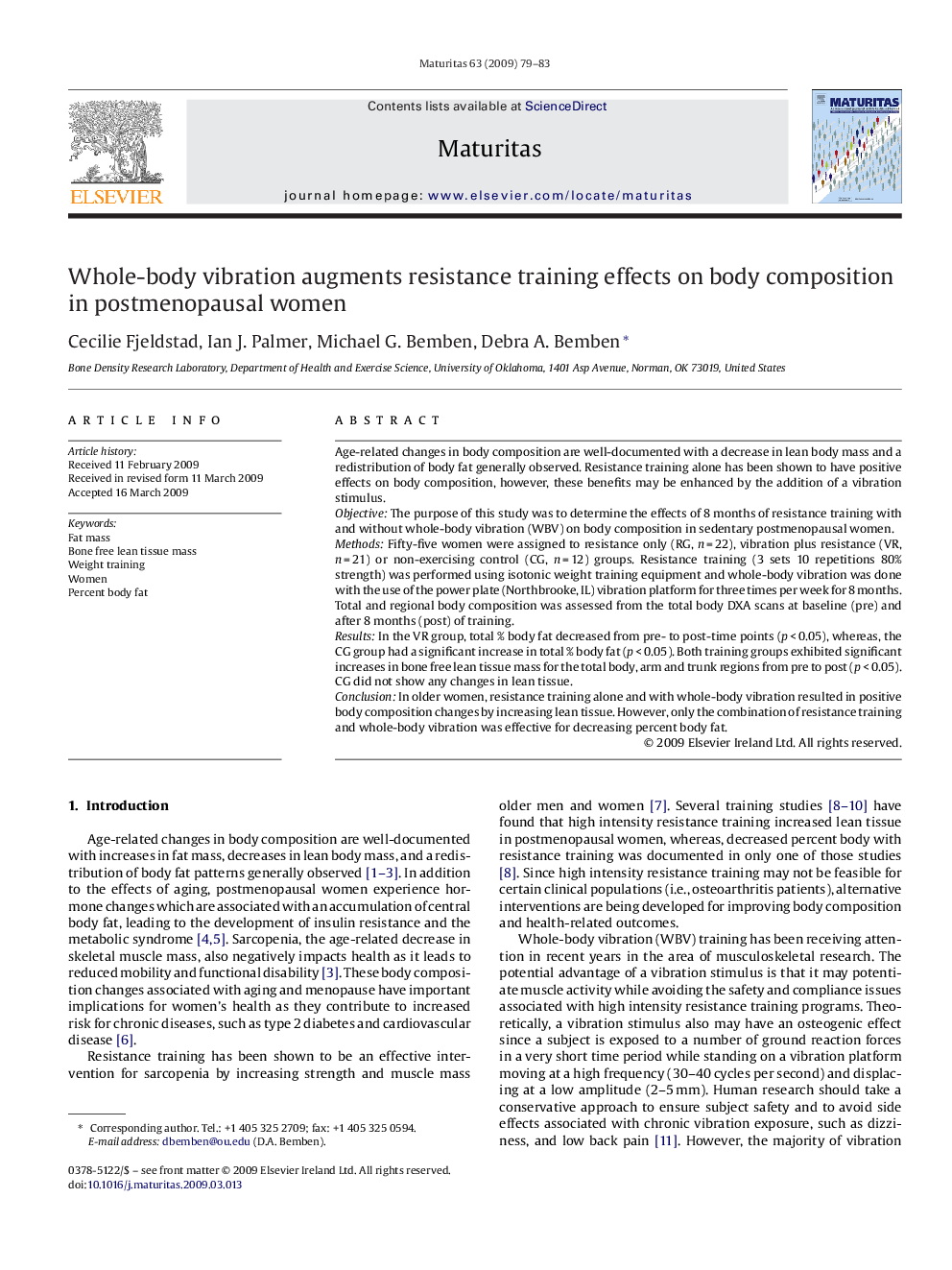| Article ID | Journal | Published Year | Pages | File Type |
|---|---|---|---|---|
| 1918304 | Maturitas | 2009 | 5 Pages |
Age-related changes in body composition are well-documented with a decrease in lean body mass and a redistribution of body fat generally observed. Resistance training alone has been shown to have positive effects on body composition, however, these benefits may be enhanced by the addition of a vibration stimulus.ObjectiveThe purpose of this study was to determine the effects of 8 months of resistance training with and without whole-body vibration (WBV) on body composition in sedentary postmenopausal women.MethodsFifty-five women were assigned to resistance only (RG, n = 22), vibration plus resistance (VR, n = 21) or non-exercising control (CG, n = 12) groups. Resistance training (3 sets 10 repetitions 80% strength) was performed using isotonic weight training equipment and whole-body vibration was done with the use of the power plate (Northbrooke, IL) vibration platform for three times per week for 8 months. Total and regional body composition was assessed from the total body DXA scans at baseline (pre) and after 8 months (post) of training.ResultsIn the VR group, total % body fat decreased from pre- to post-time points (p < 0.05), whereas, the CG group had a significant increase in total % body fat (p < 0.05). Both training groups exhibited significant increases in bone free lean tissue mass for the total body, arm and trunk regions from pre to post (p < 0.05). CG did not show any changes in lean tissue.ConclusionIn older women, resistance training alone and with whole-body vibration resulted in positive body composition changes by increasing lean tissue. However, only the combination of resistance training and whole-body vibration was effective for decreasing percent body fat.
